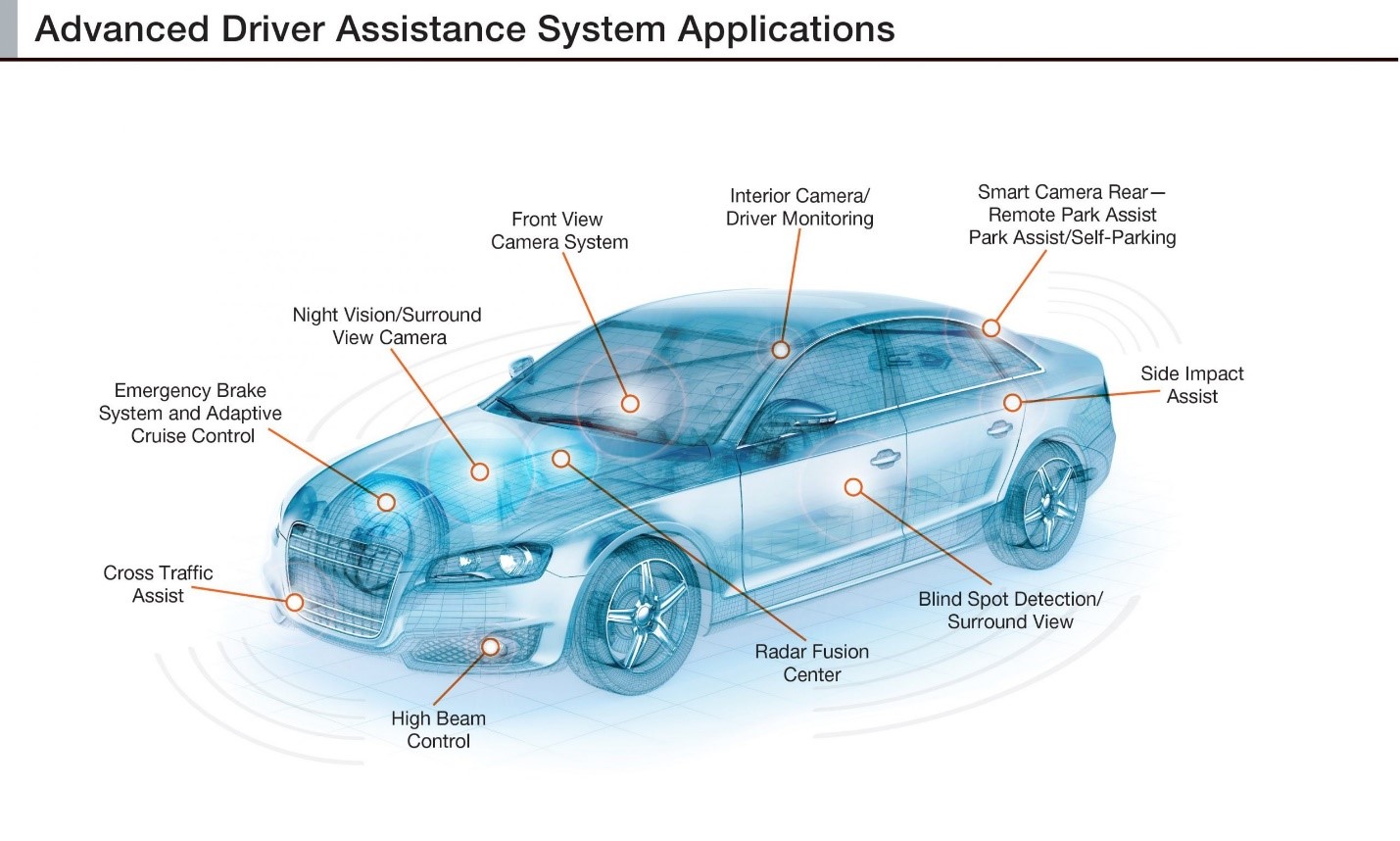
ADAS (Advanced Driver Assistance Systems)
In today's rapidly evolving automotive landscape, technology isn't just about enhancing entertainment and connectivity—it's about saving lives, improving convenience, and revolutionizing the way we drive. One of the most remarkable advancements in this realm is the implementation of Advanced Driver Assistance Systems, or ADAS. These systems are poised to shape the future of transportation, making our roads safer and our journeys more efficient.
Understanding ADAS: What Are Advanced Driver Assistance Systems?
ADAS refers to a suite of safety features and technologies integrated into modern vehicles to assist drivers in various ways. These systems use sensors, cameras, radar, and advanced software algorithms to provide real-time feedback, warnings, and, in some cases, autonomous control to enhance driving safety and comfort.
Key Components of ADAS:
Adaptive Cruise Control (ACC): ACC maintains a safe following distance by automatically adjusting your vehicle's speed to match the flow of traffic, reducing the need for constant speed adjustments.
Lane Keeping Assist (LKA): LKA uses cameras and sensors to monitor lane markings. If you drift out of your lane without signaling, it provides steering input or alerts you to correct your course.
Automatic Emergency Braking (AEB): AEB can detect impending collisions and apply the brakes if the driver doesn't respond in time. It's a crucial feature for preventing rear-end accidents.
Blind Spot Monitoring (BSM): BSM warns you when there's a vehicle in your blind spot, helping you avoid dangerous lane-changing maneuvers.
Parking Assistance: ADAS can assist with parallel parking, perpendicular parking, and even automatic parking, reducing the stress of parking in tight spaces.
Traffic Sign Recognition: This feature identifies road signs like speed limits, stop signs, and yield signs, displaying them on your dashboard or heads-up display.
Night Vision: Night vision systems use infrared cameras to detect pedestrians, animals, or obstacles beyond your headlights' range.
The Benefits of ADAS:
Improved Safety: The primary goal of ADAS is to enhance safety on the road. By providing warnings and assistance in critical situations, these systems reduce the risk of accidents caused by human error.
Reduced Driver Fatigue: Features like adaptive cruise control and lane-keeping assist help reduce the physical and mental fatigue associated with long drives.
Lower Insurance Costs: Some insurance companies offer discounts for vehicles equipped with ADAS, as they are statistically less likely to be involved in accidents.
Enhanced Convenience: ADAS features like parking assistance and adaptive cruise control make driving more convenient and less stressful.
Resale Value: Vehicles equipped with advanced safety features tend to retain their value better in the used car market.
Challenges and Considerations:
While ADAS systems offer numerous benefits, there are some challenges and considerations to keep in mind:
Driver Complacency: Drivers may become overly reliant on ADAS systems, leading to reduced attentiveness. It's essential to remember that these systems are meant to assist, not replace, human drivers.
Maintenance: ADAS systems require regular maintenance to ensure they function correctly. Dust, dirt, snow, and sensor calibration can affect their performance.
Cost: Vehicles with advanced ADAS features can be more expensive, both upfront and in terms of repair costs.
Data Privacy: Some ADAS systems collect data about your driving habits and share it with manufacturers. Be aware of the data privacy implications and settings related to your ADAS.
Looking Forward:
As automotive technology continues to advance, ADAS systems will become even more sophisticated, paving the way for fully autonomous vehicles. We still have a long way to go to make autonomous vehicles safe for all roads. During this transition, drivers can benefit from the ADAS systems in many vehicle platforms on the road today.
In conclusion, Advanced Driver Assistance Systems represent a transformative leap in automotive safety and convenience. While they come with their challenges and considerations, the overall benefits for drivers and society are substantial. As these systems continue to evolve, we can look forward to a future where accidents are minimized, and driving becomes a more comfortable and enjoyable experience for all.